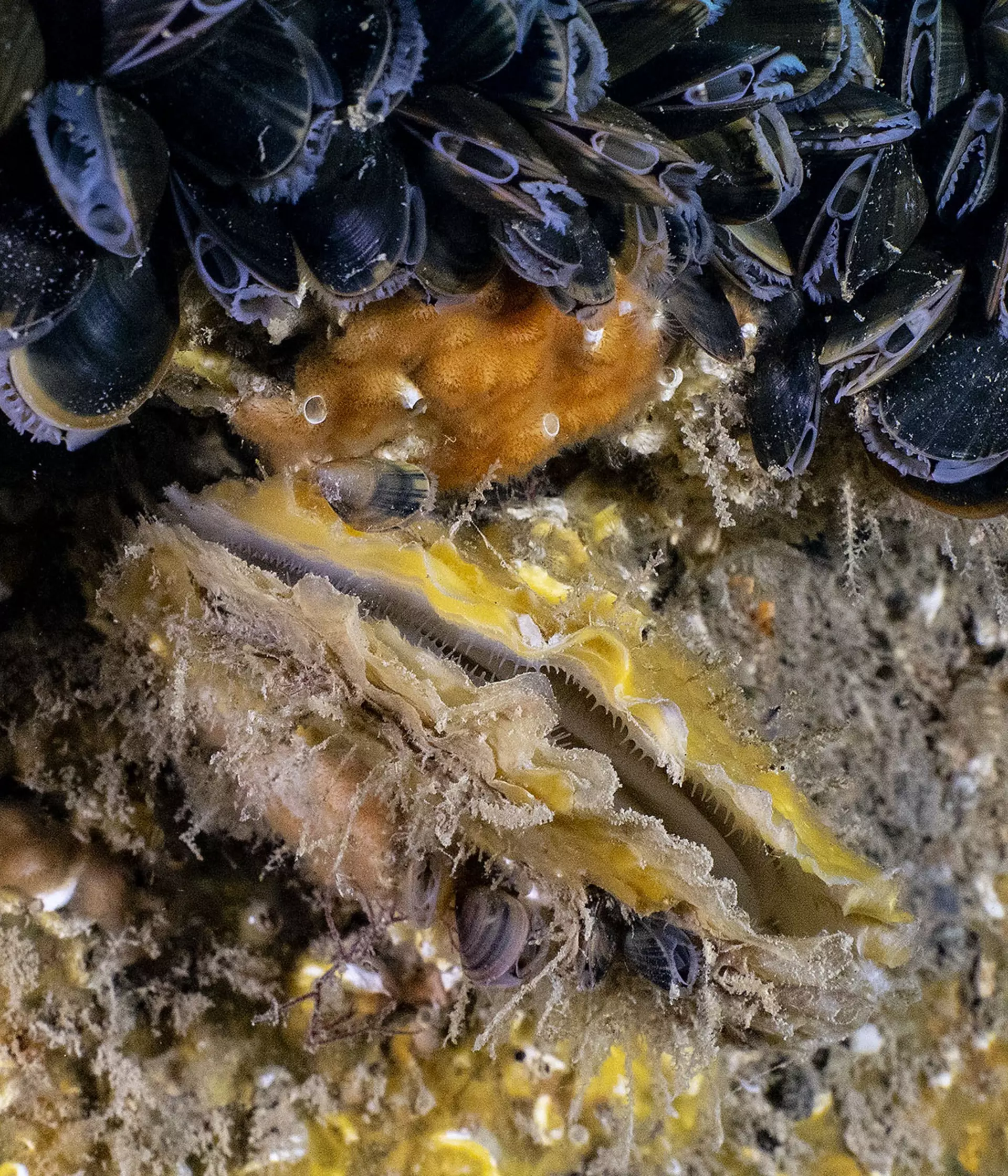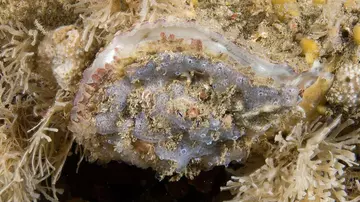
Importance of oyster conservation
The assessment, led by international conservation charity ZSL and the University of Edinburgh, and supported by researchers across Europe, reviewed historical and ecological data intending to define the extent of the European native oyster ecosystem, yet discovered that the species has faced such extreme decimation, that it is classified as ‘collapsed’ according to the IUCN’s Red List of Ecosystems criteria.
Scientists have revealed that thriving oyster reef ecosystems are nothing like those seen in European seas today. Newly compiled historical data shows these complex three-dimensional oyster reefs once grew to the size of a football pitch and collectively covered an area of over 1.7 million hectares, an area larger than Greater London.

Why are oysters so important?
They would have hosted a diverse, abundant and flourishing community of fish, crabs, starfish, and birds, such as the distinctive oystercatchers – named for their preference for feeding on oysters. The ecosystems were often called the temperate equivalent of tropical coral reefs. Healthy oyster reefs are vital habitats for many species and have a huge impact on the environment around them. They provide food for people, stabilise shorelines, cycle nutrients, and filter water —a single adult oyster filters up to 200 litres of water daily.
Current definitions of the habitat specify a handful of oysters on the seafloor as their defining feature compared to their historical vibrancy. Therefore, a lack of an ecologically meaningful baseline and accurate definition has hampered current efforts to restore reef ecosystems. The ecosystem red listing, while it delivers bad news about the habitat’s current status, should serve as a catalyst for greater ambition in ecosystem recovery.
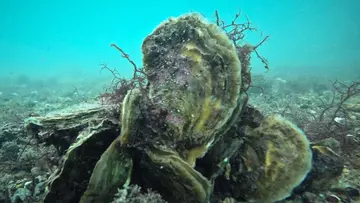
“The ecosystem has been lost from living memory, and the benefits it provided have only just been realised now it is almost too late. The stark contrast between the modern-day flat seabed and historical data must act as a wake-up call for action to restore the once-thriving marine environments,” said Alison Debney, ZSL Conservation Lead, Wetland Ecosystem Restoration and co-founder of the Native Oyster Network UK & Ireland.
Why are oysters going extinct?
Primarily due to historical overexploitation compounded by poor water quality and disease, the seafloor is now a flat, barren expanse of sediment with low diversity. European oyster reef habitats are now so scattered and degraded that, except for a few locations such as Norway and Sweden, oysters are largely found in isolation or in tiny clumps. In Europe, most oyster populations exist in densities of less than one individual per square metre. Where they are found grouped together, these oyster clumps cover less than 0.1ha.
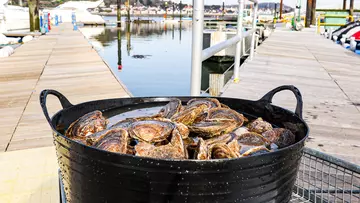
“With the collapse of the native oyster ecosystem across Europe, we’ve also lost an enormous filtration engine in the NE Atlantic due to oysters' role in filtering seawater and removing nutrients. Possibly even more stark is the loss of biodiversity that preyed or lived on these reefs and the organisms that inhabited them,” said Joanne Preston, Professor of Marine Biology, University of Portsmouth and co-founder of the Native Oyster Network UK & Ireland.
“Piecing the historical data together with data from current restoration and recovery efforts, we were able to define the original structure and function of the native oyster reef ecosystem. We were shocked by our findings. We knew from other regions that oyster reefs were important, and we have long known that they are highly degraded in Europe but pulling all this information together in a structured way, as required by the IUCN Ecosystem Red Listing Framework, brought to light the critical role that oyster reefs once served,” said Dr Philine zu Ermgassen of the University of Edinburgh.
“Given time and space, nature can recover. As a habitat-creating species, restoring native oyster habitat could potentially trigger a cascade of recovery for other species, offering a beacon of hope in the face of collapse. However, it will not be a quick fix as oyster reefs are slow to generate, with layers of new oysters building up on the dead shells of their predecessors,” said Alison Debney.

“This IUCN Red List of Ecosystems assessment of Europe’s native oyster reefs has revealed the true scale of what we have lost. But it also points to solutions,” said Marcos Valderrábano, Programme Manager Red List of Ecosystems, IUCN. “By applying the Red List of Ecosystems criteria, we can reveal the severity of ecosystem degradation, and prioritise restoration efforts. This assessment serves as a wake-up call to protect and restore ecosystems that are not only vital to biodiversity but also provide invaluable services to people and the planet.” Restoration of native oyster reefs and other coastal habitats can have multiple benefits, including boosting local economies through job creation, increasing the security of coastal livelihoods by improving fish and shellfish stocks, and boosting the tourism and recreation industries.
Oyster reefs in the UK
18 native oyster restoration projects are currently underway across the UK and Ireland, all members of the Native Oyster Network- UK and Ireland, which collaborates closely with the Native Oyster Restoration Alliance (NORA), a sister network supporting restoration efforts across Europe. Partnership projects such as The Wild Oyster Project, whereby ZSL is working with local partners and coastal communities to restore local native oyster populations in North Wales and Northeast England, play a vital role in local restoration efforts. However, these projects alone cannot restore native oyster reef ecosystems to the scale required. They must be supported by larger infrastructure that take innovative approaches to restoring oyster reef ecosystems.
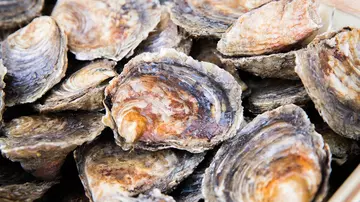
The Nature Restoration Law, part of the EU Biodiversity strategy for 2030, commenced on 18 August 2024. As described by the EU, ‘the law sets binding targets to restore 30% of degraded ecosystems, particularly those with the most potential to capture and store carbon and to prevent and reduce the impact of natural disasters.’ The UK Environment Act also includes a target: “To restore or create more than 500,000 hectares of a range of wildlife-rich habitats outside of protected sites by 2042. This is a call to countries to urgently prioritise and make sufficient resources available to restore this ecosystem at an ecologically meaningful scale.
“Current recovery efforts will be insufficient. We need to look back in time to work out a true but ambitious baseline for what healthy oyster reef ecosystems looked like to restore them to their vital ecosystem services potential - not base it on modern understanding, which has felt the impact of added pressures over-fishing and other human impacts,” said Dr Philine zu Ermgassen. “While UK and EU Restoration efforts are a commendable starting point, a cross-sector approach is needed to halt destructive activities. Small-scale restoration projects are valuable, but true ecosystem recovery requires systemic processes and sustainable financing.”
The decline of European Native Oyster ecosystems highlights a crucial moment for marine biodiversity. Human activities have drastically altered these habitats, leading to isolated oyster populations. Restoration efforts must recognise oysters' ecological importance and adopt a holistic approach to revitalising marine environments.
